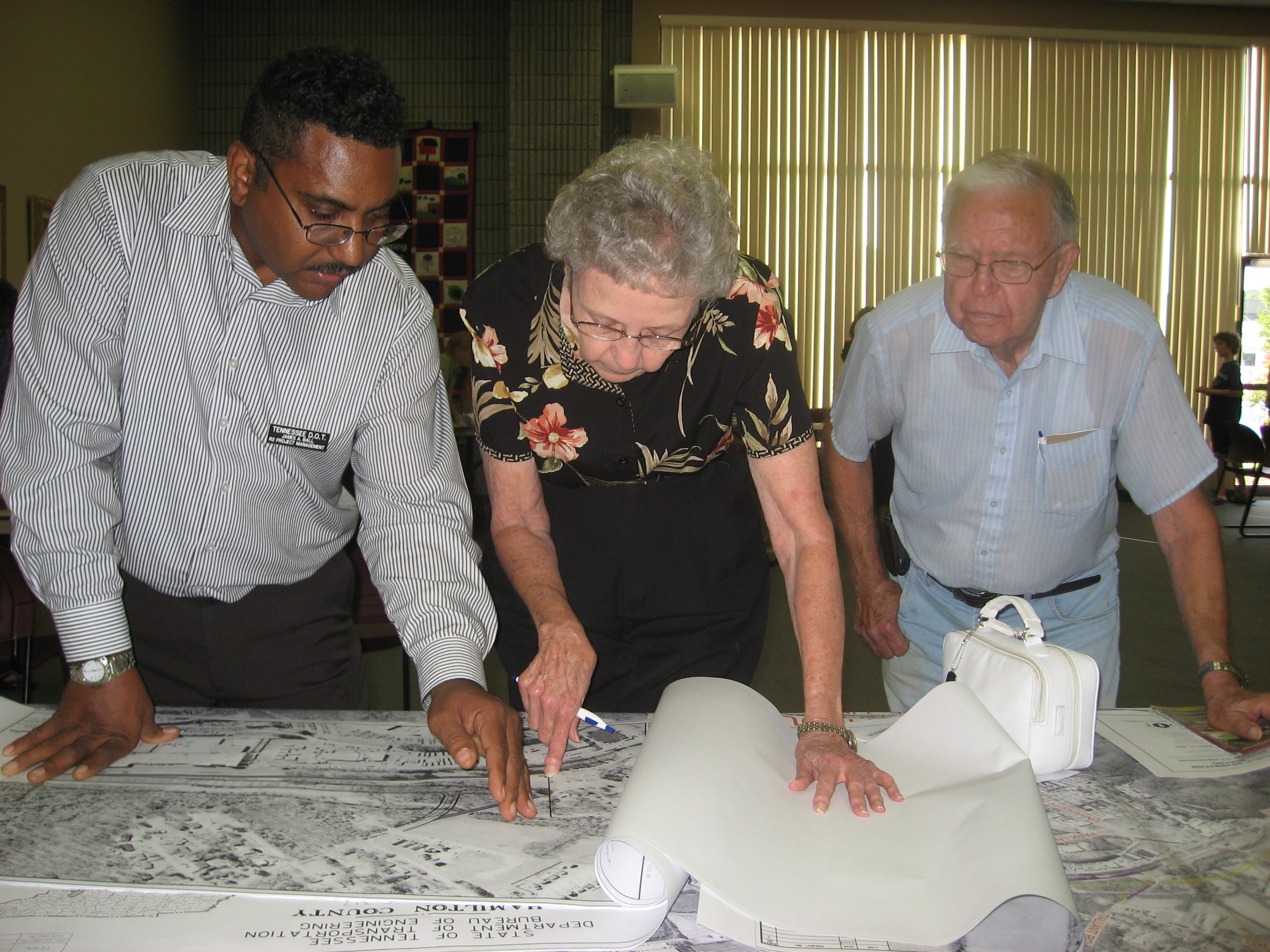The approximately four-mile project to widen Apison Pike from Ooltewah-Ringgold Road to East Brainerd road is now entering the first stages as other phases of an extensive overhaul of the corridor reach various levels of completeness.
Phase 1 will connect Apison Pike to Interstate 75 around the point of Old Lee Highway.
"You'll see action on that pretty soon," TDOT community relations officer Jennifer Flynn said, adding that construction should be complete by 2011.
Phase 2 will widen Apison Pike from just past Old Lee Highway to just past Ooltewah-Ringgold Road into five lanes. A public design meeting will be held sometime this winter.
Public comment will also be used as the Phase 3 portion progresses to the design phase.
"We do consider your comments during the development of the project," TDOT project manager James Ball told the roughly 70 people who came to hear about that portion of the project and give their comments at a public meeting Sept. 14. "It's not something we're doing just for paperwork."
The process is part of a federal requirement for environmental studies, which should be completed and approved by next spring. This most preliminary of stages will look at both build and no-build options. The public's comments will be used to show the need of the project as well as common concerns and ideas.
Those who did not have the chance to attend the meeting can submit their comments by mail or e-mail through Oct. 4.
"To be a no-build it would have to show no improvement," Flynn explained of the study's components and outcome.
The majority of the roadway section in Phase 3 currently operates at a D level, according to traffic studies done earlier this year, while about one-third of the section operates at either an E or an F.
"The closer to A the better, the closer to F is not good," Flynn explained.
Current comprehensive plans are to widen Apison Pike all the way to Silver Lane into five lanes - two lanes in each direction with a continuous turn lane - buffered by a six-foot shoulder used as a multi-purpose path for non-motorized transport and five-foot sidewalks on each side. At that point the road will transition, becoming three lanes around Layton Drive and continuing to East Brainerd Road with two travel lanes and a continuous turn lane, again buffered by a six-foot multi-purpose path and five-foot sidewalks in both directions.
A bridge crossing will be built to take the roadway over the railroad tracks and greenway near Tucker Road.
"Why are you not going to go ahead and do the whole four miles five lanes?" resident Michael Erwin asked in regards to the last phase of the project. "It seems to me while you're doing this section you should plan for five lanes all the way down the road ... before that property builds up more. We know we're going to need turn lanes as it develops. The price of everything goes up every year."
"I agree with your logic," Ball answered. "You have to consider the economy in the last few years, it's had an impact on the federal roadway system and the state. We will have traffic updates during the design phase. If that's going to be a major factor, additional lanes may be considered at that time."
But even those counts will not account for the possibility of increased use in the future. Erwin noted that more people will likely use the road once it gives them direct access to Interstate 75.
Current studies show that for the section now operating at D levels, from College Drive East to East Brainerd Road, a three-lane road would raise the portion from Layton Drive to East Brainerd Road to a level C. That scenario would have no effect on the operating level of the segment from just past Ooltewah-Ringgold Road to College Drive East, whereas a five-lane or four-lane divided roadway would raise each section's rating up three levels, resulting in between A- and C-level operations.
Collegedale City Manager Ted Rogers asked that the road be made at least five lanes to the municipal airport, which anticipates more traffic now that its runway has been extended to 5,000 feet to allow for slightly larger aircraft. Several others seconded this request.
Widening the entire project length to five lanes "would probably almost double the number of displacements," according to David Thompson, of the TDOT environmental engineering office, due to the additional amount of right of way that would be required. A five-lane road has a 96-foot right of way; a three-lane road has 72 feet of right of way.
Once right of way plans are finalized for Phase 3, estimated for 2013, affected property owners will be notified. All residents will have a chance to weigh in again before that point at a project-specific design review meeting.
